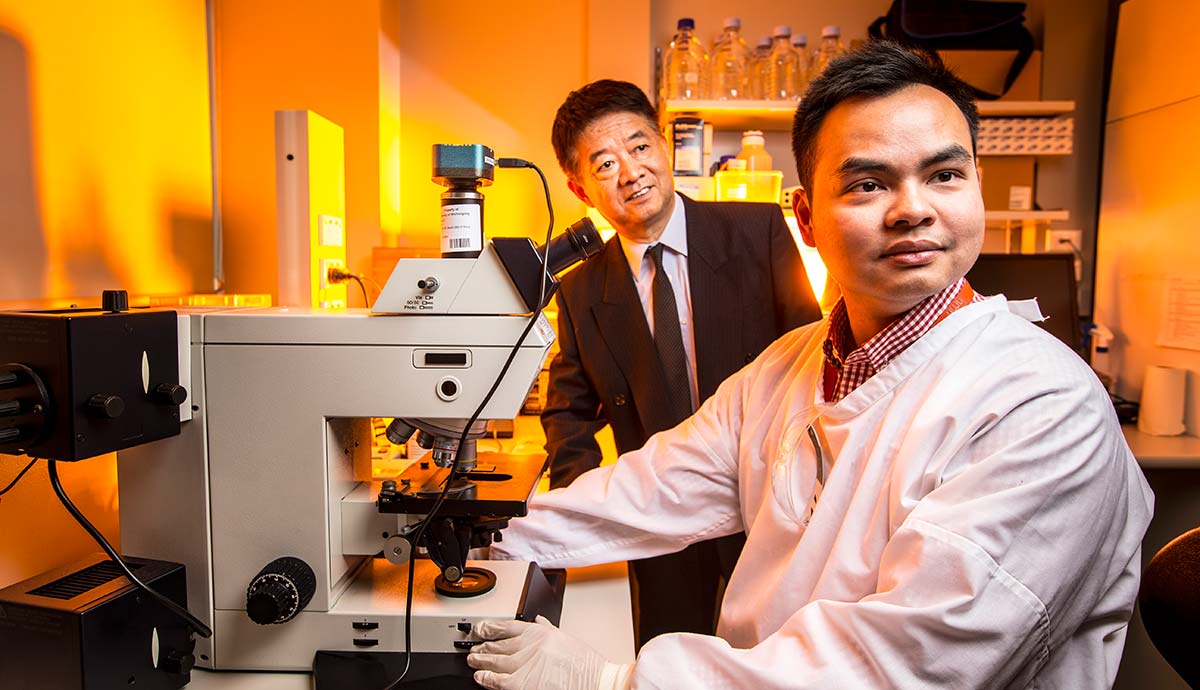May 27, 2016
Health and medical students develop device to rapidly separate cells
An innovation developed by PhD students will help neuroscientists test the effects of drugs.
An innovation developed by PhD students from the Illawarra Health and Medical Research Institute (IHMRI) and University of Wollongong (UOW) will help neuroscientists test the effects of drugs on isolated cells responsible for diseases like schizophrenia and improve the productivity and efficiency of a common laboratory task.
Separating neurons from other types of cells using traditional medium-based separation methods is difficult and alternative techniques, such as fluorescence and magnetically-activated cell sorting, involve labelling individual cells, a costly, labour-intensive process that can damage the cells the scientists are investigating.
Tiantian Jin, a PhD candidate from the IHMRI-based Centre for Translational Neuroscience (CTN), is examining the role of neurons and glial cells (cells which surround neurons and provide support for insulation between them) in the development and therapy of schizophrenia.
Frustrated by medium-based separation methods, he recently collaborated with Professor Weihua Li and his PhD students Sheng Yan, Jun Zhang and Dan Yuan from UOW’s School of Mechanical, Materials and Mechatronic Engineering, to develop a device that effectively and efficiently separates purified neurons from other types of cells.
As recently reported to the journal Biomicrofluidics, the team capitalised on a promising technology known as inertial microfluidics, which relies on intrinsic hydrodynamic forces, to create an inertial microchip which, when used in a common infusion pump, speeds the process up by collecting more neuron samples at once. In tests, the team was able to show that the device can rapidly separate neurons from glial cells (from animal brain tissue). The device also proved to be biocompatible, with the separated neurons retaining their health and function.
“We were able to collect purified neurons for a primary cell culture study with the maintenance of their normal function and for drug testing,” said Tiantian, who is supervised by CTN Director, Senior Professor Xu-Feng Huang.
“We also collected purified glial cells. As glial cell dysfunction is increasingly being linked to mental disease development, this device could be widely applied in glial cell studies in the future. It avoids using extra brain tissues and culture mediums, saving both time and money and could be used by researchers to improve the molecular characterisation of biological functions or gene expression of specific drug therapy.
“Our long-term vision would be to apply these methods in cell transplantation. Just like stem cells can be transplanted to promote growth, glial cell transplantation could be introduced to support neurogenesis.”
The paper is entitled: ‘A label-free and high-throughput separation of neuron and glial cells using an inertial microfluidic platform’. This work was highlighted in Biomicrofluidics.
